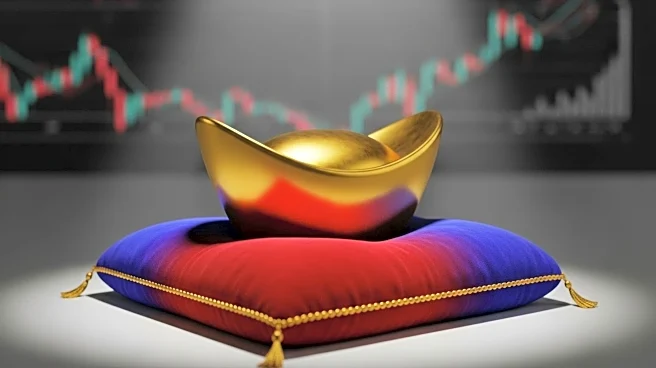What's Happening?
The Financial Times podcast 'Unhedged' recently discussed the significant rise in gold prices, which have reached nearly $4,000 an ounce, marking the biggest rally since the 1970s. Hosts Katie Martin and Robert Armstrong explored the reasons behind this surge, noting that traditional factors such as falling real interest rates are contributing to gold's appeal. Despite previous predictions of a decline, gold has increased by 12% since early September, defying expectations and prompting discussions on its role in diversified portfolios.
Why It's Important?
The surge in gold prices is significant for investors and financial markets, as it reflects broader economic uncertainties and shifts in investment strategies. Gold is traditionally seen as a safe haven during times of economic instability, and its rising value suggests increased investor caution. This trend could impact U.S. financial markets, influencing investment decisions and portfolio allocations. The discussion highlights the complexities of predicting asset movements and the importance of understanding market dynamics.
What's Next?
The podcast suggests that while gold's current high price may be unsustainable, its role in portfolios is likely to continue evolving. Investors may need to reassess their strategies in light of ongoing economic and geopolitical uncertainties. The potential for political changes and improvements in global economic conditions could alter gold's trajectory, but for now, it remains a key asset for hedging against risks.
Beyond the Headlines
The discussion also touches on the broader implications of central banks increasing their gold reserves, reflecting concerns about dollar dependency and geopolitical tensions. This trend indicates a shift towards more diversified and secure asset holdings, which could have long-term impacts on global financial stability and currency dynamics.










